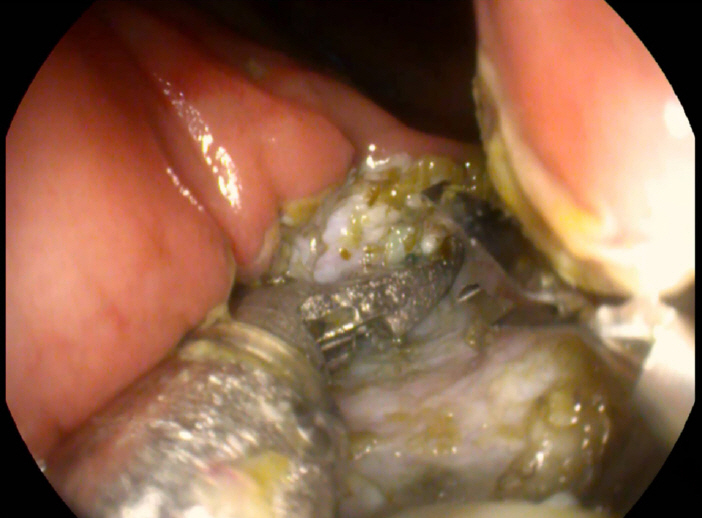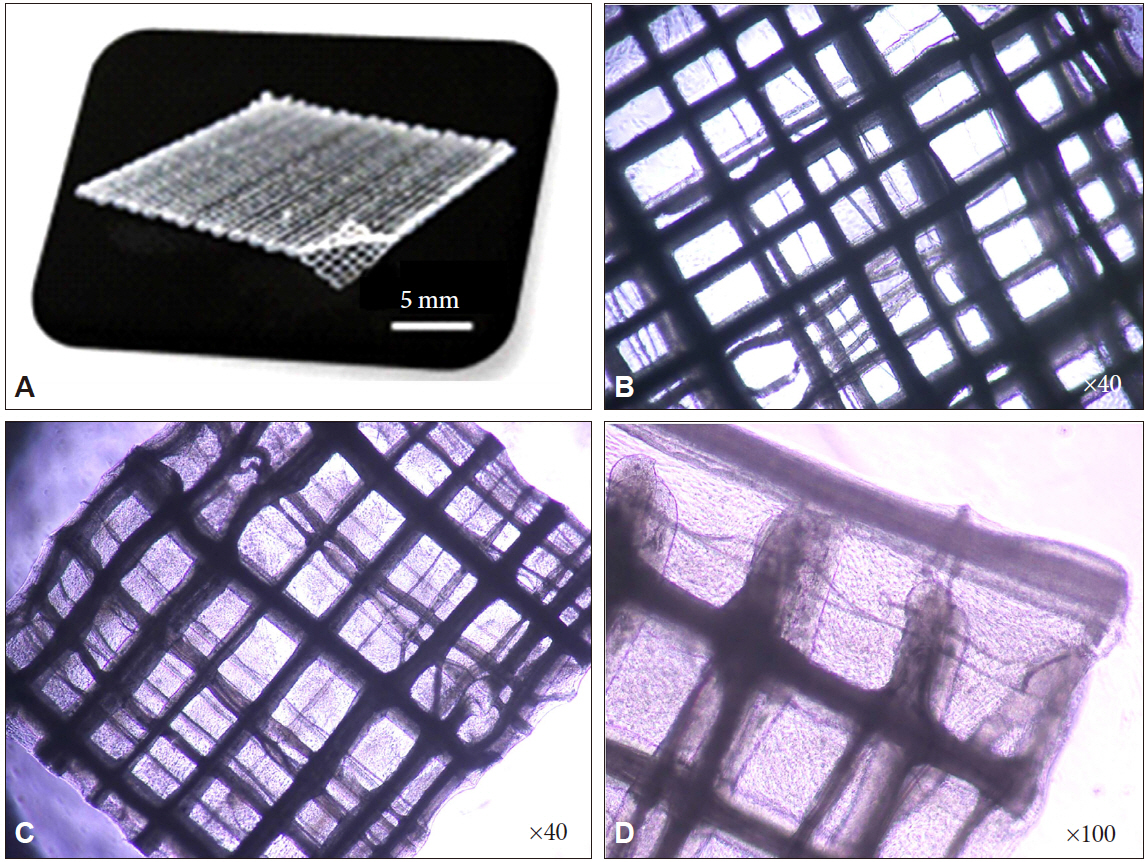Clin Endosc.
2016 Sep;49(5):438-443. 10.5946/ce.2016.104.
Endoscopic Closure for Full-Thickness Gastrointestinal Defects: Available Applications and Emerging Innovations
- Affiliations
-
- 1Department of Medicine, National University of Singapore, Singapore. ntakeshita1225@gmail.com
- KMID: 2356049
- DOI: http://doi.org/10.5946/ce.2016.104
Abstract
- Full-thickness gastrointestinal defects such as perforation, anastomotic leak, and fistula are severe conditions caused by various types of pathologies. They are more likely to require intensive care and a long hospital stay and have high rates of morbidity and mortality. After intentional full-thickness opening of hollow organs for natural orifice transluminal endoscopic surgery, safe and secure closure is urgently required. The currently available advanced endoscopic closing techniques have a major role in the treatment of full-thickness gastrointestinal defects. Appropriate usage of these techniques requires taking into account their advantages and limitations during practical application. We reviewed the available endoscopic modalities, including endoscopic clips, stents, vacuum-assisted closure, gap filling, and suturing devices, discussed their advantages and limitations when treating full-thickness gastrointestinal defects, and explored emerging innovations, including a novel endoluminal surgical platform for versatile suturing and a cell-laden scaffold for effective gap filling. Although these emerging technologies still require further pre-clinical and clinical trials to assess their feasibility and efficacy, the available modalities may be replaced and refined by these new techniques in the near future.
Keyword
MeSH Terms
Figure
Reference
-
1. Goenka MK, Goenka U. Endotherapy of leaks and fistula. World J Gastrointest Endosc. 2015; 7:702–713.
Article2. Hulscher JB, van Sandick JW, de Boer AG, et al. Extended transthoracic resection compared with limited transhiatal resection for adenocarcinoma of the esophagus. N Engl J Med. 2002; 347:1662–1669.
Article3. Orringer MB, Marshall B, Chang AC, Lee J, Pickens A, Lau CL. Two thousand transhiatal esophagectomies: changing trends, lessons learned. Ann Surg. 2007; 246:363–372.4. Biere SS, van Berge Henegouwen MI, Maas KW, et al. Minimally invasive versus open oesophagectomy for patients with oesophageal cancer: a multicentre, open-label, randomised controlled trial. Lancet. 2012; 379:1887–1892.
Article5. Luketich JD, Pennathur A, Awais O, et al. Outcomes after minimally invasive esophagectomy: review of over 1000 patients. Ann Surg. 2012; 256:95–103.6. Michel L, Grillo HC, Malt RA. Operative and nonoperative management of esophageal perforations. Ann Surg. 1981; 194:57–63.
Article7. Eroglu A, Turkyilmaz A, Aydin Y, Yekeler E, Karaoglanoglu N. Current management of esophageal perforation: 20 years experience. Dis Esophagus. 2009; 22:374–380.
Article8. Maroney TP, Ring EJ, Gordon RL, Pellegrini CA. Role of interventional radiology in the management of major esophageal leaks. Radiology. 1989; 170(3 Pt 2):1055–1057.
Article9. Patil PK, Patel SG, Mistry RC, Deshpande RK, Desai PB. Cancer of the esophagus: esophagogastric anastomotic leak: a retrospective study of predisposing factors. J Surg Oncol. 1992; 49:163–167.10. Alanezi K, Urschel JD. Mortality secondary to esophageal anastomotic leak. Ann Thorac Cardiovasc Surg. 2004; 10:71–75.11. Junemann-Ramirez M, Awan MY, Khan ZM, Rahamim JS. Anastomotic leakage post-esophagogastrectomy for esophageal carcinoma: retrospective analysis of predictive factors, management and influence on longterm survival in a high volume centre. Eur J Cardiothorac Surg. 2005; 27:3–7.12. Binmoeller KF, Grimm H, Soehendra N. Endoscopic closure of a perforation using metallic clips after snare excision of a gastric leiomyoma. Gastrointest Endosc. 1993; 39:172–174.
Article13. Yoshikane H, Hidano H, Sakakibara A, et al. Endoscopic repair by clipping of iatrogenic colonic perforation. Gastrointest Endosc. 1997; 46:464–466.
Article14. Magdeburg R, Collet P, Post S, Kaehler G. Endoclipping of iatrogenic colonic perforation to avoid surgery. Surg Endosc. 2008; 22:1500–1504.15. Cho SB, Lee WS, Joo YE, et al. Therapeutic options for iatrogenic colon perforation: feasibility of endoscopic clip closure and predictors of the need for early surgery. Surg Endosc. 2012; 26:473–479.16. Al Ghossaini N, Lucidarme D, Bulois P. Endoscopic treatment of iatrogenic gastrointestinal perforations: an overview. Dig Liver Dis. 2014; 46:195–203.17. Lee WC, Ko WJ, Cho JH, et al. Endoscopic treatment of various gastrointestinal tract defects with an over-the-scope clip: case series from a tertiary referral hospital. Clin Endosc. 2014; 47:178–182.
Article18. Mercky P, Gonzalez JM, Aimore Bonin E, et al. Usefulness of over-the-scope clipping system for closing digestive fistulas. Dig Endosc. 2015; 27:18–24.
Article19. Kouklakis G, Zezos P, Liratzopoulos N, et al. Endoscopic treatment of a gastrocutaneous fistula using the over-the-scope-clip system: a case report. Diagn Ther Endosc. 2011; 2011:384143.20. Manta R, Manno M, Bertani H, et al. Endoscopic treatment of gastrointestinal fistulas using an over-the-scope clip (OTSC) device: case series from a tertiary referral center. Endoscopy. 2011; 43:545–548.
Article21. Mennigen R, Colombo-Benkmann M, Senninger N, Laukoetter M. Endoscopic closure of postoperative gastrointestinal leakages and fistulas with the over-the-scope clip (OTSC). J Gastrointest Surg. 2013; 17:1058–1065.
Article22. Haito-Chavez Y, Law JK, Kratt T, et al. International multicenter experience with an over-the-scope clipping device for endoscopic management of GI defects (with video). Gastrointest Endosc. 2014; 80:610–622.
Article23. Mennigen R, Senninger N, Laukoetter MG. Novel treatment options for perforations of the upper gastrointestinal tract: endoscopic vacuum therapy and over-the-scope clips. World J Gastroenterol. 2014; 20:7767–7776.
Article24. Voermans RP, Le Moine O, von Renteln D, et al. Efficacy of endoscopic closure of acute perforations of the gastrointestinal tract. Clin Gastroenterol Hepatol. 2012; 10:603–608.
Article25. Lee BI, Kim BW, Kim HK, et al. Routine mucosal closure with a detachable snare and clips after endoscopic submucosal dissection for gastric epithelial neoplasms: a randomized controlled trial. Gut Liver. 2011; 5:454–459.
Article26. Kim YJ, Shin SK, Lee HJ, et al. Endoscopic management of anastomotic leakage after gastrectomy for gastric cancer: how efficacious is it? Scand J Gastroenterol. 2013; 48:111–118.
Article27. D’Cunha J, Rueth NM, Groth SS, Maddaus MA, Andrade RS, et al. Esophageal stents for anastomotic leaks and perforations. J Thorac Cardiovasc Surg. 2011; 142:39–46. e1.
Article28. Gelbmann CM, Ratiu NL, Rath HC, et al. Use of self-expandable plastic stents for the treatment of esophageal perforations and symptomatic anastomotic leaks. Endoscopy. 2004; 36:695–699.
Article29. Dai Y, Chopra SS, Steinbach M, Kneif S, Hunerbein M. Esophageal stents for leaks and perforations. Semin Thorac Cardiovasc Surg. 2011; 23:159–162.
Article30. van Boeckel PG, Sijbring A, Vleggaar FP, Siersema PD. Systematic review: temporary stent placement for benign rupture or anastomotic leak of the oesophagus. Aliment Pharmacol Ther. 2011; 33:1292–1301.
Article31. Puli SR, Spofford IS, Thompson CC. Use of self-expandable stents in the treatment of bariatric surgery leaks: a systematic review and meta-analysis. Gastrointest Endosc. 2012; 75:287–293.
Article32. Černá M, Köcher M, Válek V, et al. Covered biodegradable stent: new therapeutic option for the management of esophageal perforation or anastomotic leak. Cardiovasc Intervent Radiol. 2011; 34:1267–1271.
Article33. Vanbiervliet G, Filippi J, Karimdjee BS, et al. The role of clips in preventing migration of fully covered metallic esophageal stents: a pilot comparative study. Surg Endosc. 2012; 26:53–59.
Article34. Schaheen L, Blackmon SH, Nason KS. Optimal approach to the management of intrathoracic esophageal leak following esophagectomy: a systematic review. Am J Surg. 2014; 208:536–543.
Article35. Venturi ML, Attinger CE, Mesbahi AN, Hess CL, Graw KS. Mechanisms and clinical applications of the vacuum-assisted closure (VAC) Device: a review. Am J Clin Dermatol. 2005; 6:185–194.36. Loske G, Schorsch T, Müller C. Intraluminal and intracavitary vacuum therapy for esophageal leakage: a new endoscopic minimally invasive approach. Endoscopy. 2011; 43:540–544.
Article37. Ahrens M, Schulte T, Egberts J, et al. Drainage of esophageal leakage using endoscopic vacuum therapy: a prospective pilot study. Endoscopy. 2010; 42:693–698.
Article38. Rábago LR, Ventosa N, Castro JL, Marco J, Herrera N, Gea F. Endoscopic treatment of postoperative fistulas resistant to conservative management using biological fibrin glue. Endoscopy. 2002; 34:632–638.
Article39. Pramateftakis MG, Vrakas G, Kanellos I, et al. Endoscopic application of n-butyl-2-cyanoacrylate on esophagojejunal anastomotic leak: a case report. J Med Case Rep. 2011; 5:96.
Article40. Farra J, Zhuge Y, Neville HL, Thompson WR, Sola JE. Submucosal fibrin glue injection for closure of recurrent tracheoesophageal fistula. Pediatr Surg Int. 2010; 26:237–240.
Article41. Lippert E, Klebl FH, Schweller F, et al. Fibrin glue in the endoscopic treatment of fistulae and anastomotic leakages of the gastrointestinal tract. Int J Colorectal Dis. 2011; 26:303–311.
Article42. Tringali A, Daniel FB, Familiari P, et al. Endoscopic treatment of a recalcitrant esophageal fistula with new tools: stents, surgisis, and nitinol staples (with video). Gastrointest Endosc. 2010; 72:647–650.
Article43. Toussaint E, Eisendrath P, Kwan V, Dugardeyn S, Devière J, Le Moine O. Endoscopic treatment of postoperative enterocutaneous fistulas after bariatric surgery with the use of a fistula plug: report of five cases. Endoscopy. 2009; 41:560–563.
Article44. Maluf-Filho F, Hondo F, Halwan B, de Lima MS, Giordano-Nappi JH, Sakai P. Endoscopic treatment of Roux-en-Y gastric bypass-related gastrocutaneous fistulas using a novel biomaterial. Surg Endosc. 2009; 23:1541–1545.
Article45. Bohm G, Mossdorf A, Klink C, et al. Treatment algorithm for postoperative upper gastrointestinal fistulas and leaks using combined vicryl plug and fibrin glue. Endoscopy. 2010; 42:599–602.
Article46. Henderson JB, Sorser SA, Atia AN, Catalano MF. Repair of esophageal perforations using a novel endoscopic suturing system. Gastrointest Endosc. 2014; 80:535–537.
Article47. Juza RM, Pauli EM, Mathew A. Endoscopic resection of a gastric gastrointestinal stromal cell tumor with full thickness defect closure using endoscopic suturing device. In : 2014 American College of Surgeons (ACS) Clinical Congress; 2014 Oct 27; San Fransisco, CA.48. Pauli EM, Delaney CP, Champagne B, Stein S, Marks JM. Safety and effectiveness of an endoscopic suturing device in a human colonic treat-and-resect model. Surg Innov. 2013; 20:594–599.
Article49. Pauli EM, Beshir H, Mathew A. Gastrogastric fistulae following gastric bypass surgery-clinical recognition and treatment. Curr Gastroenterol Rep. 2014; 16:405.
Article50. Cai JX, Khashab MA, Okolo PI 3rd, Kalloo AN, Kumbhari V. Full-thickness endoscopic suturing of staple-line leaks following laparoscopic sleeve gastrectomy. Endoscopy. 2014; 46 Suppl 1 UCTN:E623–E624.
Article51. Bonin EA, Wong Kee Song LM, Gostout ZS, Bingener J, Gostout CJ. Closure of a persistent esophagopleural fistula assisted by a novel endoscopic suturing system. Endoscopy. 2012; 44 Suppl 2 UCTN:E8–E9.
Article52. Kantsevoy SV, Thuluvath PJ. Successful closure of a chronic refractory gastrocutaneous fistula with a new endoscopic suturing device (with video). Gastrointest Endosc. 2012; 75:688–690.
Article53. Fernandez-Esparrach G, Lautz DB, Thompson CC. Endoscopic repair of gastrogastric fistula after Roux-en-Y gastric bypass: a less-invasive approach. Surg Obes Relat Dis. 2010; 6:282–288.
Article54. Halvax P, Diana M, Lègner A, et al. Endoluminal full-thickness suture repair of gastrotomy: a survival study. Surg Endosc. 2015; 29:3404–3408.
Article55. Phee SJ, Low SC, Huynh VA, Kencana AP, Sun ZL, Yang K. Master and slave transluminal endoscopic robot (MASTER) for natural orifice transluminal endoscopic surgery (NOTES). Conf Proc IEEE Eng Med Biol Soc. 2009; 2009:1192–1195.
Article56. Bonvallet PP, Schultz MJ, Mitchell EH, et al. Microporous dermal-mimetic electrospun scaffolds pre-seeded with fibroblasts promote tissue regeneration in full-thickness skin wounds. PLoS One. 2015; 10:e0122359.
Article57. Li JL, Cai YL, Guo YL, et al. Fabrication of three-dimensional porous scaffolds with controlled filament orientation and large pore size via an improved E-jetting technique. J Biomed Mater Res B Appl Biomater. 2014; 102:651–658.
Article
- Full Text Links
- Actions
-
Cited
- CITED
-
- Close
- Share
- Similar articles
-
- Natural Orifice Transluminal Endoscopic Surgery and Upper Gastrointestinal Tract
- Closing the Gaps: Endoscopic Suturing for Large Submucosal and Full-Thickness Defects
- Omental Patching and Purse-String Endosuture Closure after Endoscopic Full-Thickness Resection in Patients with Gastric Gastrointestinal Stromal Tumors
- Endoscopic Full-Thickness Resection for Gastric Subepithelial Lesions Arising from the Muscularis Propria
- Review of Pure Endoscopic Full-Thickness Resection of the Upper Gastrointestinal Tract




